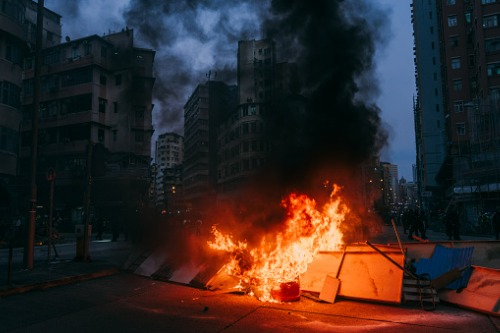

The number of large protests and demonstrations – those with at least 100 participants – has spiked 36% since the Global Financial Crisis (GFC) in 2008-2009, from an average of 355 per year in the 10 years to 2009 to 483 per year in the decade following, according to a study by specialty reinsurance company Chaucer. This rise in protests has increased interest in strikes, riots and civil commotions (SRCC) insurance, a special category of insurance that protects businesses against losses incurred due to protests and other civil unrest.
The rise in large protests has been notable across Europe, the Middle East and Africa, Chaucer said. The number of large protests in Europe spiked 71%, from an average of 92 per year between 2000 and 2009 to 157 between 2010 and 2019. Average annual protests for the Middle East and North Africa (MENA) region rose by 229% (from 22 to 72 per year), while those for sub-Saharan Africa rose 48% (from 59 to 88 per year).
The effect of the GFC on public finances led to many governments enacting austerity measures, including spending cuts and tax increases. That, in turn, led to popular opposition movements and street protests, including the Occupy movement in the US and elsewhere.
In recent years, the Black Lives Matter movement has led to an increase in protests in the US and across the globe, according to Chaucer. The reinsurer’s analysis of US data found that the number of large protests jumped 156% last year, from 2,553 to 6,545, driven by the Black Lives Matter movement.
Germany saw the largest increase in sizeable protests among major European economies, Chaucer reported. The number jumped from an average of 4.7 per year between 2000 and 2009 to 16.3 between 2010 and 2019, a spike of 247%. France followed, with a 108% increase from 7.1 annually to 14.8 annually.
Last year, the COVID-19 pandemic led to the largest economic contraction since the Great Depression, adding stress to developing economies still recovering from the GFC. Chaucer predicted that more political unrest would arise in the coming years as a result of the pandemic.
“These figures clearly show an increase in political unrest in the post-financial crisis world,” said Andrew Bauckham, head of political violence and crisis management at Chaucer. “When times are tough, anger inevitably mounts against governments and elites, which spills over into protest and civil unrest. Increasing incidents of civil protest has led some international insurers to exclude damage caused by protests and unrest from mainstream insurance.
“This process of removing cover was accelerated by the increase in global protests after the Global Financial Crisis. This has created the need for a specific class of insurance that banks, retailers, leisure operators, real estate funds and other businesses can buy to make sure they are covered for what can be very major losses.”
Businesses and homeowners are increasingly looking to specialist SRCC insurance to supplement their standard policies, Chaucer said.
“Failure to do so could potentially be costly,” the insurer said. “According to the Insurance Information Institute, the Black Lives Matter protests between May 26 and June 8 of 2020 are estimated to have cost US insurers between $1-$2 billion.”
